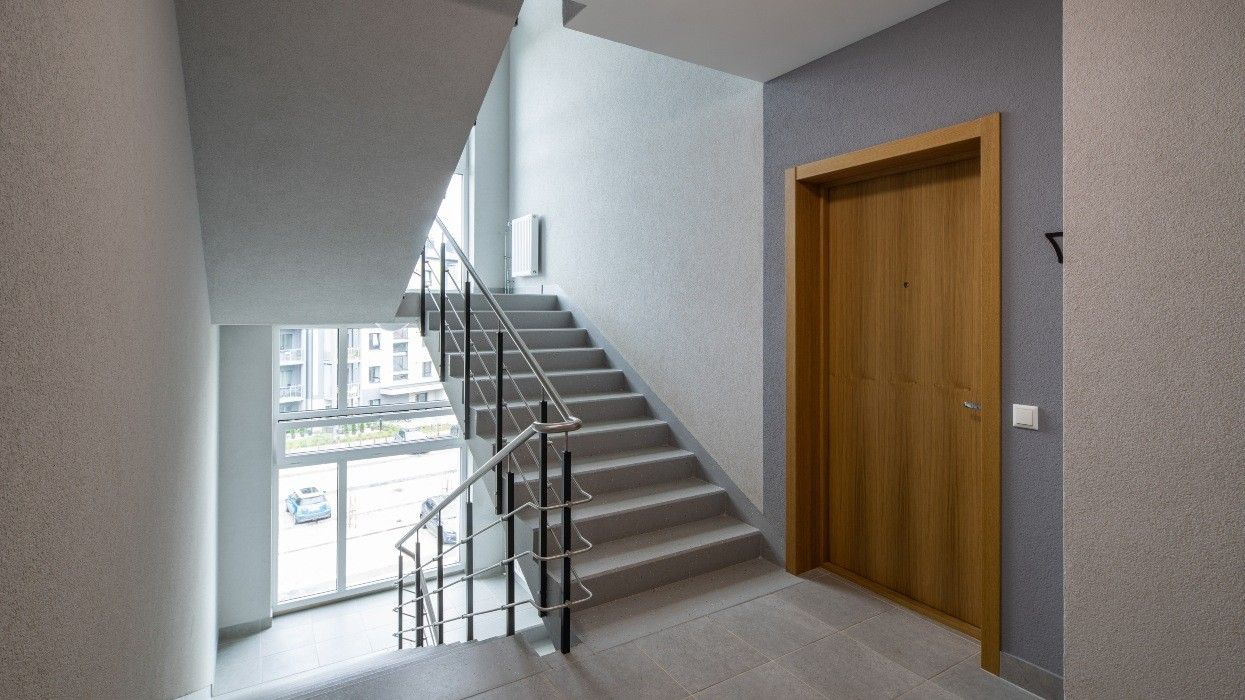British Columbia has officially updated its Building Code, the regulation that governs construction, to allow for single egress stair designs in low-rise and mid-rise buildings, a move that many in the housing and development industry have been pushing for.
With the update, buildings up to six storeys in height will no longer be required to provide a second stairwell, a design constraint that many in the industry have said results in the need for more land, while also limiting the amount of possible building forms.
Prior to the change, at least two egress stairwells were required in buildings three storeys and higher.
The update also includes changes that:
- Limit the occupancy load to 24 people, per floor;
- Limit the travel distance to the exit;
- Provide automatic sprinkler systems throughout buildings, including balconies;
- Manage smoke movement and include other fire protections; and
- Require high-level local fire department and high-level building operations and management to ensure ongoing fire system inspections.
"With people struggling to find housing that meets their needs, we have to find ways to innovate and build differently," added Minister of Housing Ravi Kahlon. "By adjusting BC's building code to allow single egress stair buildings, we can not only boost housing supply, but also create more options for people and families who need larger layouts and more bedrooms. This will allow people to live, grow and prosper in the communities they call home."
In late-June, Kahlon tweeted out an "options and implications report" that the Province commissioned engineering consulting firm Jensen Hughes to conduct, which Kahlon said provided some options to counterbalance reducing the egress requirement.
In Canada, much of the provincial building codes are based on the National Building Code of Canada that was first drafted in 1941, the Province says. Fire prevention mechanisms and technology have improved significantly since then, and many jurisdictions across the world have started allowing single egress designs in larger and larger buildings.
The Province adds that the BC Building Code requirements regarding single egress has not been updated since 1998, and adds that it consulted with the fire-service community, building sector groups, and local governments in July and August.
"Single egress stair building designs build on advancements in fire and life safety, while requiring only one egress stairwell," the Province said on Thursday. "These building designs are currently implemented in major cities, such as Seattle and New York, and support the supply of more homes for people where development was previously not possible due to lot size, cost of land assembly and other limitations."
Thursday's announcement drew praise from many in industry, particularly from those outside of British Columbia.
"I applaud the BC government on its rapid, evidence-based action on single egress, one of the barriers to constructing small apartment buildings with family-friendly larger units," said University of Ottawa Housing Researcher Dr. Carolyn Whitzman. "The BC government continues to be a leader in responding to the needs of non-market and market developers, as they work to increase affordable housing supply in locations where they are most needed."
"British Columbia is once again showing national leadership in addressing the housing shortage, providing a model for other provinces to emulate," added Dr. Mike Moffat, Senior Director of the Smart Prosperity Institute. "It is their innovative approach that is helping to address the housing crisis throughout the province, opening the doors for more housing options for people and families in the communities they wish to stay in."
Although the announcement was made today, the changes actually came into effect on August 27, according to a Building and Safety Standards Branch email.
- Cherise Burda On Her Task Force's Blueprint For More And Better Housing ›
- Inside Vancouver's Vienna House Project And Vienna's Vancouver House Project ›
- BC-Based Urbanarium's "Decoding Density" Competition Drawing Global Attention ›
- Construction Associations Push BC To Create Ministry Of Construction ›
- Vancouver City Staff Opposing Single Egress Building Code Change ›
- Burnaby Mayor Pushing BC To Repeal Single Egress Stairways ›


















